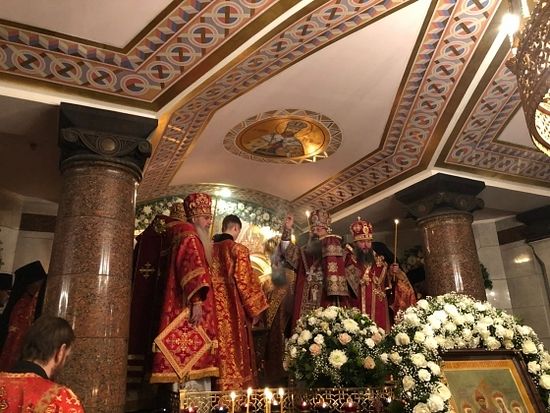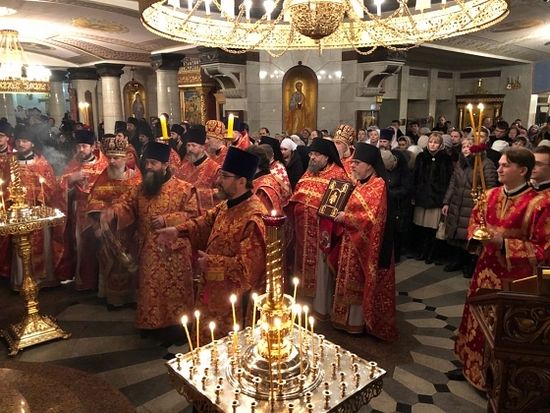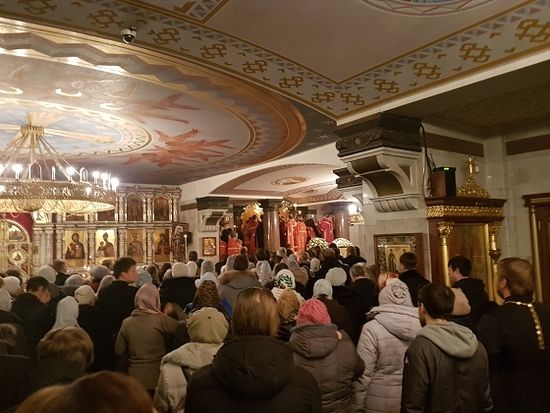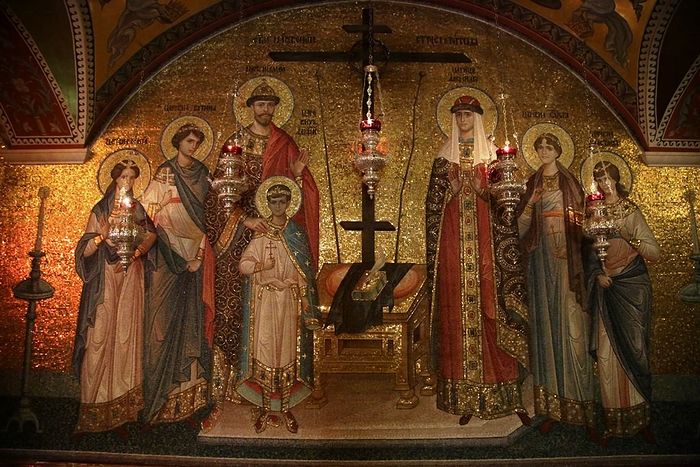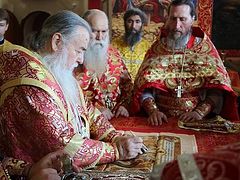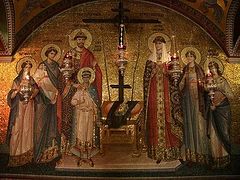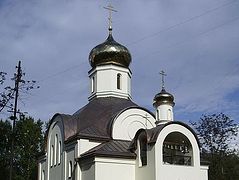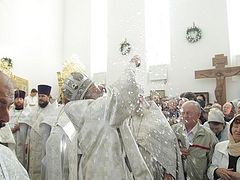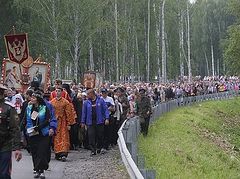Ekaterinburg, December 14, 2018
His Eminence Metropolitan Kirill of Ekaterinburg and Verkhotursky celebrated the great consecration of the altar dedicated to the holy Royal Martyrs—Tsar Nicholas II and his sainted family—in the Church on the Blood in Honor of All Saints of Russia on Wednesday, December 12, reports the Diocese of Ekaterinburg.
His Eminence was concelebrated by the hierarchs of the Ekaterinburg Metropolitanate: Bishops Methodius of Kamensk and Alapaevsk, Bishop Eugene of Nizhny Tagil and Nevyansk, and Bishop Alexei of Serov and Krasnoturinsk.
The first Divine Liturgy on the altar after its consecration was celebrated immediately after the rite of consecration.
Speaking later that day at a diocesan meeting, Met. Kirill stated that the Divine Liturgy is served weekly on Tuesday night to Wednesday morning, in honor of the Royal Martyrs, who were murdered on the night of Tuesday July 16 to Wednesday July 17, 1918. There is also a Liturgy every month on the night of the 16th to the 17th.
“People come with their parishes, with their choirs, they serve, they pray, they are consoled. And probably, of all those who served, not one left the same as he came. They all had a special piety and special prayerful state,” Met. Kirill said, inviting all the clergy to take part in the services on this holy site.
“It will be very joyful and beneficial for everyone. Let us hope that our love for the Tsar will give us the reverence to continue our work in Ekaterinburg,” he added.
***
The altar for the chapel, built on the site of the Royal Family’s martyrdom, was reconstructed in time for their 100th anniversary this year, and the first Divine Liturgy following the renovations was celebrated on the night of June 15-16 by Met. Kirill.
The altar, known as the “Royal Room,” has its own architectural style.
“Today, the architecture of the altar has completely changed. Like the edicule in the Church of the Holy Sepulchre in Jerusalem, one church stands inside another. Inside the Church on the Blood there is another small church, which has its own architectural form, its own vaulting, and its own structure,” Archpriest Maxim Minyailo, a senior cleric of the church, explained in June.
Decorative elements in the altar were crafted by masters from Moscow and Belarus. The mosaics were made by specialists from the St. Elisabeth Convent in Minsk, and the work was supervised by nuns from the New Tikhvin Monastery in Ekaterinburg, renowned for their skills in the restoration and decoration of Orthodox churches.
The central part of the renovated altar is occupied by a mosaic panel depicting the members of the Royal Family and their entourage, including St. Eugene Botkin, who shared in their martyric deaths. The mosaic reflects the position of the Passion-Bearers at the moment of their deaths, standing with their faces to the west. Above them overlooks the Feodorovskaya Icon of the Mother of God—the Heavenly protectress of the House of Romanov.
The western vault depicts the Reigning, or Enthroned Icon of the Mother of God, which miraculously appeared on the day that Tsar Nicholas II was forced to abdicate the throne, and the saints glorified during the tsar’s reign: St. Theodosius of Chernigov, St. Seraphim of Sarov, Holy Princess Anna of Kashin, St. Joasaph of Belgorod, St. Hermogenes of Moscow, St. Pitirim of Tambov, and St. John of Tobolsk.
Nearly a year was spent on the icons in the altar.
The walls and floor around the altar table are lined with red onyx, symbolizing both royalty and the martyrs’ blood. “This color very well shows the podvig of the Royal Passion-Bearers, who in their royal grandeur and in humiliation showed a rare piety and extraordinary spiritual height.”
Follow us on Facebook!

